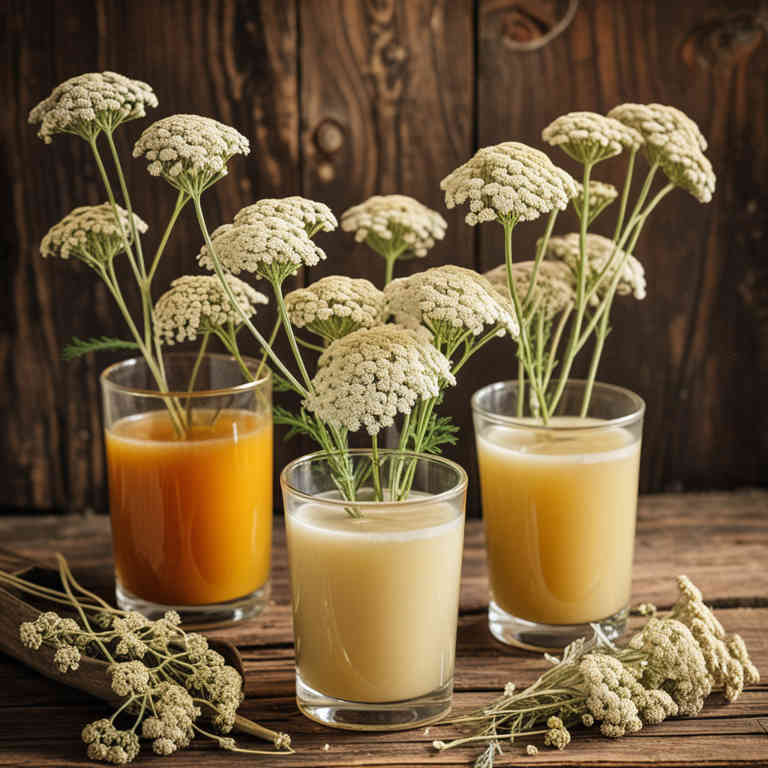Achillea millefolium juice for medicinal use

Achillea millefolium juice is a preparation made from the fresh or dried leaves of the yarrow plant, known for its strong, slightly bitter aroma.
It has been traditionally used in herbal medicine to support digestive health and reduce inflammation. The juice is often consumed internally to help with stomach ulcers, menstrual discomfort, and skin conditions. It can also be applied topically to soothe insect bites and minor wounds.
In modern herbalism, it is valued for its antimicrobial and astringent properties.
Uses
Achillea millefolium juice has been used to treat wounds, inflammation, and digestive issues for centuries.
Historically, it was revered by ancient Greeks and Romans for its healing properties, with the name "Achillea" derived from the legendary warrior Achilles, who is said to have used it to treat his soldiers' wounds. In traditional medicine, it has been employed to soothe skin irritations, reduce fever, and support liver function. Modern research suggests it may have antioxidant and anti-inflammatory effects, leading to its use in natural remedies for skin conditions and digestive health.
Today, it is often found in topical applications and herbal supplements, continuing its legacy as a versatile herbal preparation.
Benefits
Achillea millefolium juice has health benefits such as anti-inflammatory, antioxidant, and wound-healing properties.
It is traditionally used to support digestive health and may help alleviate symptoms of stomach ulcers. The juice contains compounds like sesquiterpene lactones, which contribute to its therapeutic effects. It is also believed to promote skin health and may assist in reducing oxidative stress in the body.
However, it should be used with caution and under professional guidance due to potential side effects.
Constituents
Achillea millefolium juice active constituents include sesquiterpene lactones, flavonoids, phenolic acids, and volatile oils.
These compounds are responsible for the plant's anti-inflammatory, antimicrobial, and antioxidant properties. Sesquiterpene lactones are known to support wound healing and reduce inflammation. Flavonoids contribute to the juice's ability to neutralize free radicals and protect cells from oxidative stress.
Additionally, volatile oils may aid in digestive health and promote respiratory function.
Preparation
To make Achillea millefolium juice, first gather fresh yarrow plants, ensuring they are free from pesticides and pollutants.
Wash the leaves and stems thoroughly, then chop them into small pieces to release their juices. Place the chopped yarrow in a blender or a juicer and process until a liquid is obtained. Strain the mixture through a fine mesh or cheesecloth to remove any solids.
Finally, store the juice in a sealed container in the refrigerator for up to a week.
Side Effects
Achillea millefolium juice may lead to gastrointestinal discomfort, including nausea, vomiting, and diarrhea, especially when consumed in large quantities.
It may also cause skin irritation or allergic reactions in some individuals, particularly those with sensitivities to plants in the Asteraceae family. Prolonged use could potentially affect liver function, as some compounds in the juice may be hepatotoxic. There is also a risk of interactions with medications, particularly those affecting the blood or the central nervous system.
Due to these potential side effects, it is advisable to consult a healthcare professional before using Achillea millefolium juice as a supplement.